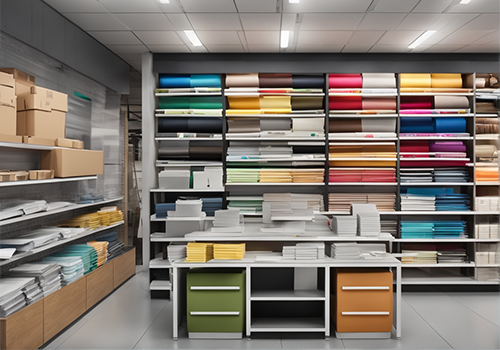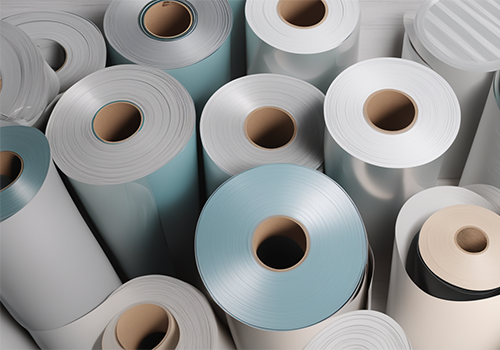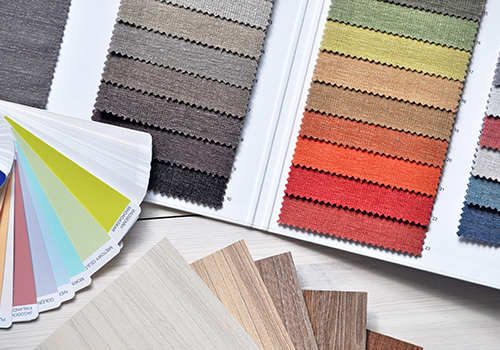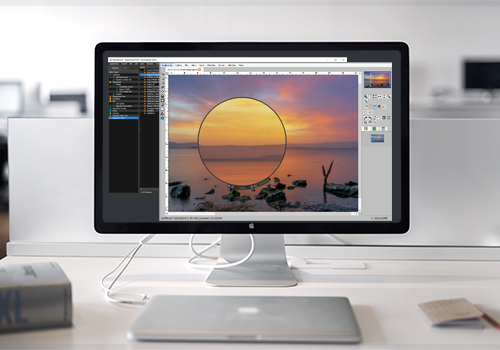How to Achieve Consistent Colours Across Different Substrates
In the realm of printing, achieving consistent colour reproduction across diverse substrates remains a persistent challenge. From vibrant textiles to glossy packaging materials, each surface presents unique characteristics that can influence the final appearance of printed colours. To overcome this challenge, a strategic combination of robust RIP software and comprehensive colour management practices is essential.
The Diversity of Printing Substrates
Achieving uniform colour across various substrates can be quite challenging, primarily due to the extensive range of materials involved.
Some popular types include:
- Paper: The predominant substrate in printing, paper presents a diverse range of textures, coatings, and colours. Variations such as matte, glossy, uncoated, and specialty papers influence ink absorption and reflection, posing challenges for achieving consistent colour reproduction.
- Fabric: Textile printing introduces unique considerations due to the multitude of fabric materials, from natural fibres like cotton and silk to synthetic blends. Each fabric type interacts differently with ink, further complicated by factors like texture, weave, and stretchiness, making colour consistency a complex endeavour.
- Metal: Printing on metal surfaces presents distinct challenges, as metals vary in reflectivity, texture, and surface treatments. These variations can significantly impact the appearance of printed colours. Achieving vibrant and precise colours on metal is particularly crucial in applications like automotive signage and custom metal art.
- Plastics: Plastics encompass a wide spectrum of substrates, ranging from transparent films to opaque containers. The translucency of certain plastics can modify perceived colours, necessitating adjustments in colour profiles. Moreover, plastics may exhibit variations in texture and opacity, demanding meticulous colour management for accurate results.

Each substrate has its own inherent colour characteristics - paper may introduce warmth or coolness to colours, while fabrics can impart texture-related variations. Metals may cast reflections, and plastics may refract light in unique ways. These inherent traits, if left unaccounted for, can lead to significant colour discrepancies in the final output.
Colour-managed RIP software, such as Serendipity Blackmagic and Megarip are engineered to understand and adapt to the idiosyncrasies of various substrates, thanks to the utilisation of media profiles. It takes into account the specific characteristics of the substrate, such as ink absorption rates, reflectivity, and texture, and modifies the image data accordingly.
This adaptation, driven by carefully crafted media profiles, is pivotal in achieving consistent colour reproduction across the diverse substrates used in modern printing.
Achieving Colour Consistency
The path to achieving colour consistency begins with understanding the substrate's unique traits. Whether it's paper, fabric, metal, or plastic, each material possesses distinct qualities that will influence how colours appear. These attributes include ink absorbency, reflectivity, and texture.
When an image is intended for printing on a particular substrate, the software can be tailored to optimise performance for that specific material. For example, if a certain fabric tends to absorb ink rapidly, resulting in a shift toward darker colours, the software can be finely adjusted to counteract this effect.
Print professionals often create or select profiles tailored to specific substrates. These profiles contain essential information about the substrate's characteristics, such as ink absorption rates and colour behaviour. Subsequently, these profiles are seamlessly integrated into the software, serving as invaluable guides in the precise management of colours.

Custom substrate profiles are essential to achieve consistent colours when printing regardless of whether you're working with paper, fabric, metal, or plastic. Colour management software streamlines this process, allowing printers to adapt to different substrate types. The software simplifies the creation of custom substrate profiles through its user-friendly interface, guiding operators through essential steps. These steps often involve selecting the appropriate material, configuring ink limits, and measuring colours using devices like densitometers or spectrophotometers.
One of the main advantages of using RIP software for custom substrate profiling is the ability to store and manage these profiles. Once created, they become valuable assets for future print jobs, not only saving time but also ensuring consistent colour quality throughout your work.
RIP software's adaptability is a tremendous asset to the diverse needs of the printing industry. It empowers businesses to explore a wide range of printing applications. For instance, in the textile industry, the software seamlessly accommodates different fabric types, from cotton to polyester, all while maintaining colour fidelity. Likewise, in packaging, it effortlessly handles various substrates, from cardboard to metallic materials, expanding the possibilities of what can be achieved through digital printing.
Consider a packaging company that caters to multiple clients, each with distinct requirements. RIP software enables seamless transitions between projects, ensuring that each brand's colours are faithfully reproduced on the chosen packaging material. This adaptability is a market differentiator that fosters client satisfaction and loyalty.
Strategies for Consistent Colour Prints
Getting colours just right on different substrates is a bit of an art-meets-science challenge. To tackle this challenge effectively, you need to understand different substrates and leverage RIP software's colour management features. Here are key aspects and practical methods that enable you to achieve colour consistency across materials, serving as the building blocks for precise and consistent prints.
- Substrate Understanding: Know the substrate's unique properties, including ink absorbency, texture, and reflectivity, as these characteristics profoundly impact colour accuracy.
- Software Configuration: Configure the software to match substrate characteristics for optimal colour reproduction, ensuring that your digital designs translate faithfully onto different materials.
- Custom Profiles: Create/select custom profiles for different substrates to ensure accurate colour representation, allowing you to maintain consistent branding and quality.
- Ink Limits: Set appropriate ink limits to prevent over-saturation or under-inking based on absorbency, a crucial step in avoiding colour discrepancies.
- Colour Calibration: Regularly calibrate printer and software to maintain colour accuracy, especially important when switching between substrates or inks.
- Measurement Devices: Use densitometers/spectrophotometers to measure colour and ensure consistency, providing precise data for adjustments.
- Colour Management: Implement robust colour management practices for workflow consistency.
- Test Prints: Conduct test prints on different substrates to fine-tune settings, allowing you to spot and address colour variations early.
- Storage & Organisation: Manage custom substrate profiles within the colour management software for easy retrieval, facilitating efficient workflows.
- Regular Maintenance: Ensure equipment is well-maintained for consistent colour output, reducing the risk of unexpected deviations.
- Workflow Standardisation: Standardise colour workflow processes to minimise variations when switching profiles, enhancing efficiency and reducing errors.
- Quality Control Checks: Implement checks to catch colour inconsistencies early in the production process, maintaining high-quality output.
Precision Partner
Getting colours right across different materials is no longer an elusive goal; it's an achievable feat, all thanks to colour-managed RIP software. This dynamic tool adapts, crafts custom substrate profiles, and wields precision colour-matching techniques, making it your trusty sidekick in the quest for colour consistency.
With this software by your side, you can confidently navigate the complex terrain of printing on diverse substrates, ensuring your final output impeccably mirrors your chosen colours with unparalleled precision.



